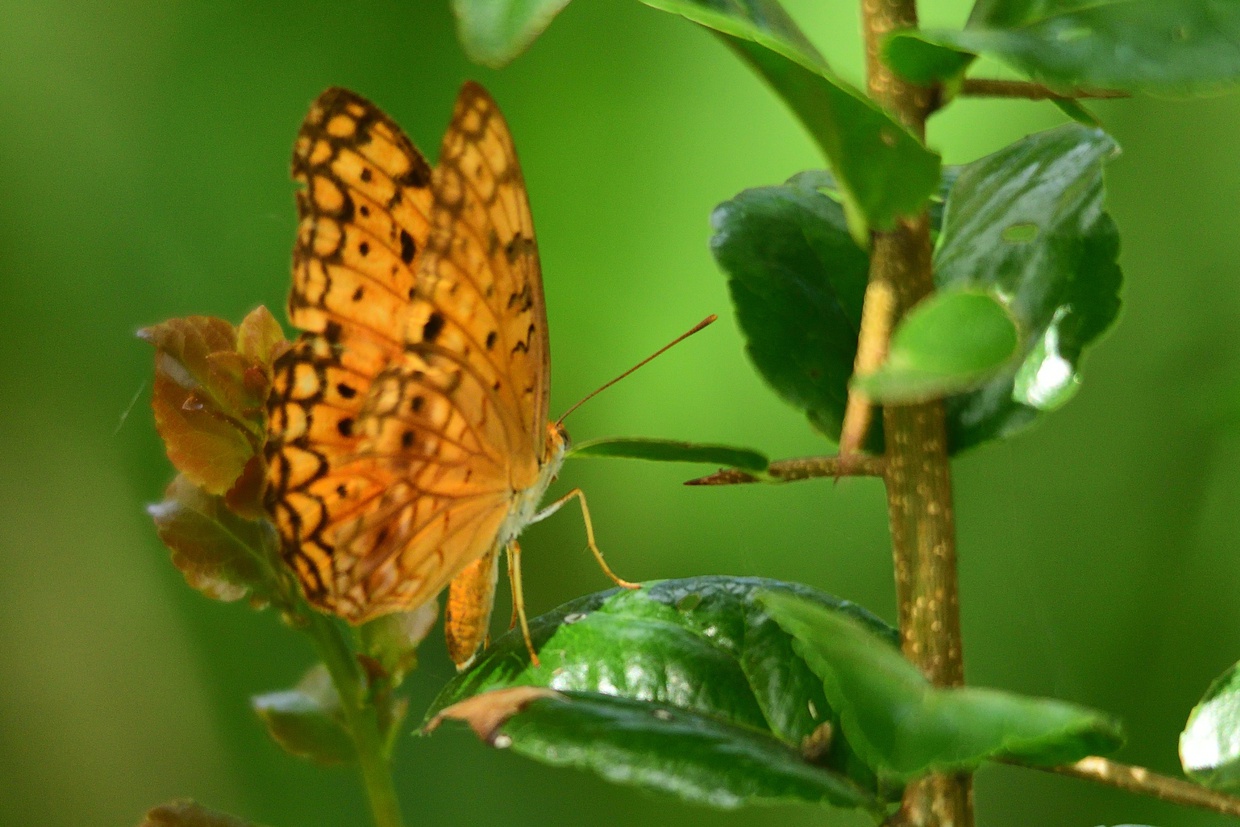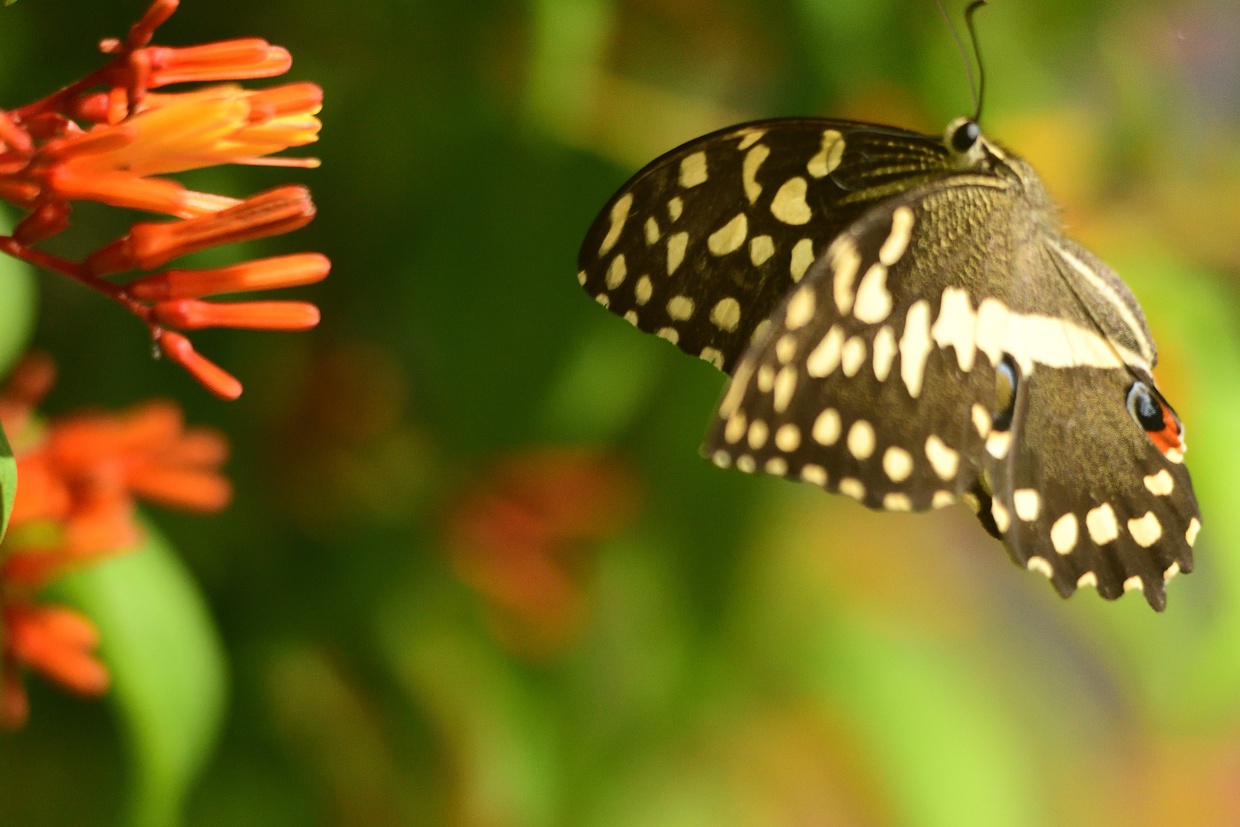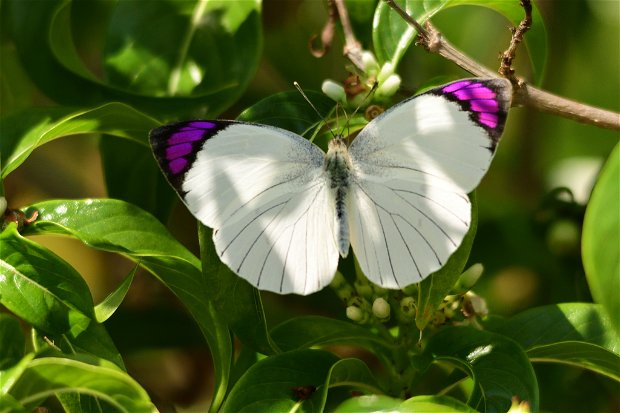Butterflies of Kijongo Bay Resort
July, is that time of year, when Kijongo Bay Resort gardens’ come alive with butterflies. So many different species are found in the gardens, that we are still counting and trying to identify them.
Kijongo fairies or flying dinosaurs?
 Common Leopard (Phalanta phalantha)
Common Leopard (Phalanta phalantha)
At Kijongo Bay Resort, a lot of our plants, shrubs and trees are indigenous, with only some of our flora being nonindigenous, butterflies are therefore, very important pollinators in our gardens.
Butterflies fall under the order Lepidoptera; this includes both moths and butterflies. Most butterflies are part of a super family, Papilionoidea. Lepidoptera is a Greek word and basically means scale-wing.
The common name of butterfly is regarded to come from old English and or old Dutch, thought to describe the insects that were seen flying round at the start of summer, the season for making butter on the farms.
Butterflies are distributed worldwide and are found on every continent except Antarctica. Worldwide there are around 18500 known species.
The oldest evidence of butterflies is a fossil that was found in Denmark and is around 55 million years old.
What are the main differences between butterflies and moths?
 Pale Patroller (Brakefieldia simonsii)
Pale Patroller (Brakefieldia simonsii)
Well, this is a slippery slope, without diving into DNA studies, there is not a lot of difference between the two.
But there are a few pointers to look for: to start with, moths are mostly nocturnal, and butterflies are diurnal.
When you can get up close enough to observe, butterflies antennae differ to moths, with moths having feathery like antenna and butterflies having straight, non hairy, clubbed like antenna.
In general, butterflies are more colourful than moths, but this is the least reliable difference.
At rest moths spread out their wings, flattening them against the surface they are resting against, where butterflies hold their wings upright, folded above the body. However, butterflies will often hold out their wings to “warm up” or bask in the sun.
Moths use a form of silk to spin the cocoon, where very few butterflies use this method.
 Diverse White (Appias epaphia)
Diverse White (Appias epaphia)
Butterfly behaviour
 Citrus Swallowtail (Papilio demodocus)
Citrus Swallowtail (Papilio demodocus)
Butterflies only consume liquids, which are taken into the body by their proboscis. Butterflies feed on nectar as a primary source of nutrition. The nectar delivers both sugar and sodium, both vital for energy and reproduction. Some species will supplement their diet and gather additional nutrition and moisture from animal dung, rotting fruit, tree sap or gum, pollen and carrion.
In some species, the male butterfly mud puddle. Research is suggesting that they collect salt and nutrients, that they then present to the female, as a “bribe” to mate.
 Mocker swallowtail (Papilio dardanus)
Mocker swallowtail (Papilio dardanus)
All butterflies have antennae that they use to check for scents. These antennae are covered with sensory organs called sensilla, these are used to pick up chemical signals called pheromones. These pheromones are used by a variety of insects as a way of finding each other and advertising their sexual availability.
 Dusky-veined Acraea (Acraea igola)
Dusky-veined Acraea (Acraea igola)
Butterflies have well developed vision and have receptacles in the eyes that are used to read the ultraviolet light spectrum.
When it comes to a female butterfly laying her eggs, the location is vitally important, as the resultant caterpillars are food specific, and therefore need certain types of food to grow. The female butterfly “tastes” the food source to check its compatibility; this is done with chemoreceptors on her feet. A butterfly “tastes” its food with its feet!
 Pink Acraea (Acraea caecilia)
Pink Acraea (Acraea caecilia)
Butterflies are cold blooded and first need to warm up in the mornings before they can fly and feed. They do this by angling their wings to the sun to absorb the maximum energy from the sun.
Protecting oneself as a Butterfly.
 African Monarch Danaus (Chrysippus dorippus)
African Monarch Danaus (Chrysippus dorippus)
Butterflies as a species have a few tricks to protect themselves from predators. Their protection varies from chemical, advertising, copying, camouflage and deception.
Chemical warfare. Some butterflies have evolved to a way to take the toxic substances from some plants and use them to protect themselves. These toxins are mostly absorbed when the caterpillar feeds on the plant. This makes the butterfly toxic or unpleasant to eat.
This leads to advertising, because if a predator does not know they are toxic, it is quite pointless. An unpalatable butterfly or caterpillar will advertise the fact by being brightly coloured, with bright contrasting colours. This is called aposematism.
 Common Orange Tip (Colotis evenina)
Common Orange Tip (Colotis evenina)
Some butterflies copy or mimic this colouring and aposematism to delude predators. These butterflies are not toxic, but present the colours to confuse predators. This is called mimicry, interestingly, mostly used by females from some species.
 Mocker swallowtail (Papilio dardanus)
Mocker swallowtail (Papilio dardanus)
Camouflage is found in nearly all species of butterflies and caterpillars. Some butterflies have different coloured wings, between top and bottom. They will freeze and present a camouflaged underside of the wing, which resembles their main food in colour. Most caterpillars are very close to their food in colour and some even in texture. There are some species of caterpillars that resemble bird droppings, making them difficult to spot by predators.
 Citrus Swallowtail (Papilio demodocus)
Citrus Swallowtail (Papilio demodocus)
Deception takes a couple of different forms. Some butterflies have eye spots on their wings and when confronted by a predator, they will flash these eye spots to look bigger and even look like a bird or snake. Some caterpillars have false eyes on their rear end, deflecting any attack from its head.
 Mocker swallowtail (Papilio dardanus)
Mocker swallowtail (Papilio dardanus)
Disclaimer
All the butterflies in the photographs have been identified to the best of our knowledge and capabilities. There may be mistakes, but we are only human at the end of the day.
Identification was made possible by research using:
https://www.inaturalist.org/projects/butterflies-of-tanzania?tab=species
and
http://www.tanzaniabirds.net/butterfly/id.htm








Share This Post